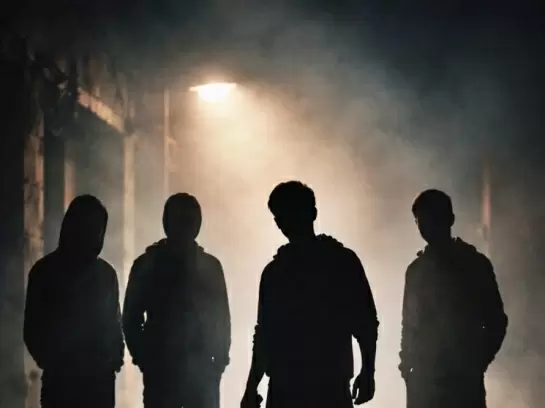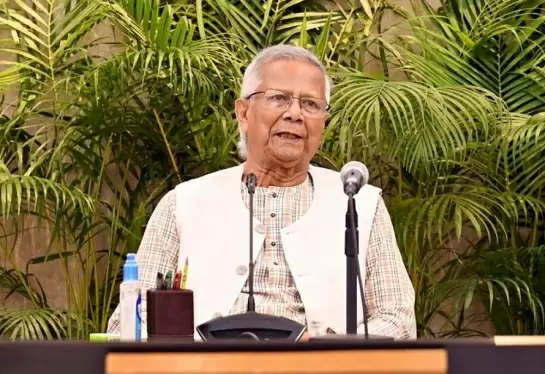Modi's vision and Hindutva brigade's mission
10-October-2015
Narendra Modi is probably learning the veracity of Stalin's insightful aphorism that while one death is a tragedy, a million is a statistic.
In a country which has seen innumerable communal riots over the decades, and a 25 percent rise in inter-faith violence since Modi came to power, the furore over the death of one Muslim in a village near Delhi must be something of a puzzle and also hugely disconcerting for the government because it cannot quite anticipate what the fallout will be over a period of time.
Its concerns must be all the greater because the incident persuaded President Pranab Mukherjee to deviate from a written script at a Rashtrapati Bhavan function and call for preserving the nation's "core" values.
The president's appeal made the prime minister break what the New York Times once called his "dangerous silence" on the attacks on minorities and urge Hindus and Muslims to fight poverty and not one another.
Evidently, the murderous attack on a Muslim family by a saffron mob on the suspicion that they were eating beef has alerted the prime minister about the growing level of intolerance in the saffron camp.
For Modi, the tragedy could not have occurred at a worse time, for it has taken much of the sheen off his recent foreign trip. Even German chancellor Angela Merkel's visit to India was overshadowed by the murder.
What the centre and the BJP may feel uneasy about is that even as they issue the routine condemnations, they will be largely unable to brush aside the primary motive for the murder since cow slaughter has always had great emotional appeal for the saffron brotherhood.
As a result, the Hindu chauvinists will be forever on the lookout for any provocation in their eyes as can be seen from the manhandling of an MLA by the BJP legislators inside the Jammu and Kashmir assembly for holding a beef party and the burning of a truck carrying cows and the assault on a Muslim youth who was in the truck in Uttar Pradesh.
These acts of violence show that for all of Modi's efforts, the communal situation will continue to simmer. Moreover, the government's difficulty will be in failing to sell the idea of the "holy cow" without being seen as oddballs in today's world by the beef-eating foreign investors.
It was easier for the Hindutva lobby to accuse Muslims of invasion, rape, pillage and desecration of temples in medieval times, and then link them with today's jehadis in order to buttress its essentially anti-Muslim worldview.
But it is difficult to justify the killing of a Muslim for allegedly eating beef. Hence the widespread criticism in the international media of this "accident", as Union Minister of State for Culture Mahesh Sharma called it.
In the last few days, therefore, much of the favourable impression which Modi succeeded in creating about himself abroad with his dress sense, eloquence and tears for his mother has been largely negated by the rage expressed by saffronites against beef-eaters.
Coupled with the suspected involvement of the Hindu Right in the killing of rationalists, the anti-beef agitation will make the task of governance all the more difficult.
Arguably, the realization in the government that the depredations of the Hindu fundamentalists will have an adverse impact on foreign investment will persuade it to rein them in.
But it will not be easy to bridge the gap between Modi's vision of a 21st century India - a digitalized nation, smart cities, bullet trains - and the desire of the Hindu hyper-nationalists to impose their culinary fads on the country.
Admittedly, the BJP has become a lot more sober than the time when it moved from the margins of politics to centre-stage in the 1990s with its call for demolishing mosques, or the "ocular" provocations, to quote L.K. Advani, the party's fiery rath yatri (chariot rider) of the time.
Stints in power at the centre and in some of the states have made it aware of the "idea" of India, or the Nehruvian concept of a nation with a composite culture, incorporating the multihued strands of the religions of all those who live in the country - Hindus, Muslims, Christians, Sikhs, Jains, Parsis and others.
However, this sophisticated view is apparently confined to a thin layer of those in the BJP's upper echelons while the vast majority in the party and in the Sangh parivar subscribes to the concept of Hindu rashtra (nation), where the minorities will be second class citizens.
Modi has been successful so far in preventing a major communal outbreak that was anticipated by the Congress's Mani Shankar Aiyar, who said that he was waiting for the Godhra or Gujarat "moment" which would set the ball rolling for Modi's downfall.
The latest incident, however, poses a real challenge to the prime minister because it relates to the issue of cow slaughter which is probably even more sensitive to the saffron crowd than the "ocular" provocations.
Yet, he has no option but to douse the flames since the success or failure of his "Make in India" project based on foreign investment depends on his fire-fighting abilities directed against sections of his own party and 'parivar'.
(Amulya Ganguli is a political analyst. The views expressed are personal. He can be reached at [email protected]) - IANS
Sri Lankan Navy Arrests 12 TN Fishermen, Impounds Trawler Near Dhanushkodi
Protests Outside Bangladesh High Commission in Delhi Over Lynching of Hindu Youth
Ragging Row Erupts at RG Kar Medical College; First-Year Students File Complaint
Intel Flags ISI Plot To Incite Anti-India Fury In Bangladesh, Push New Delhi Into Military Response
Bengal School Owner Arrested for Harassing Singer Lagnajita; Court Sends Him to Police Custody









